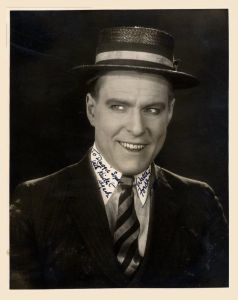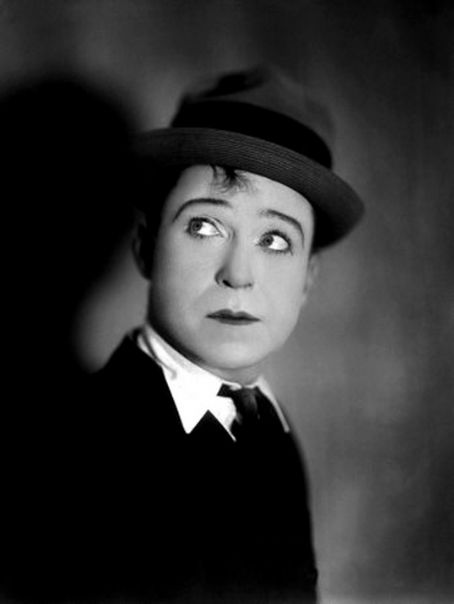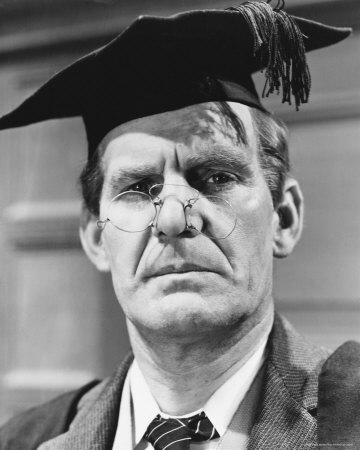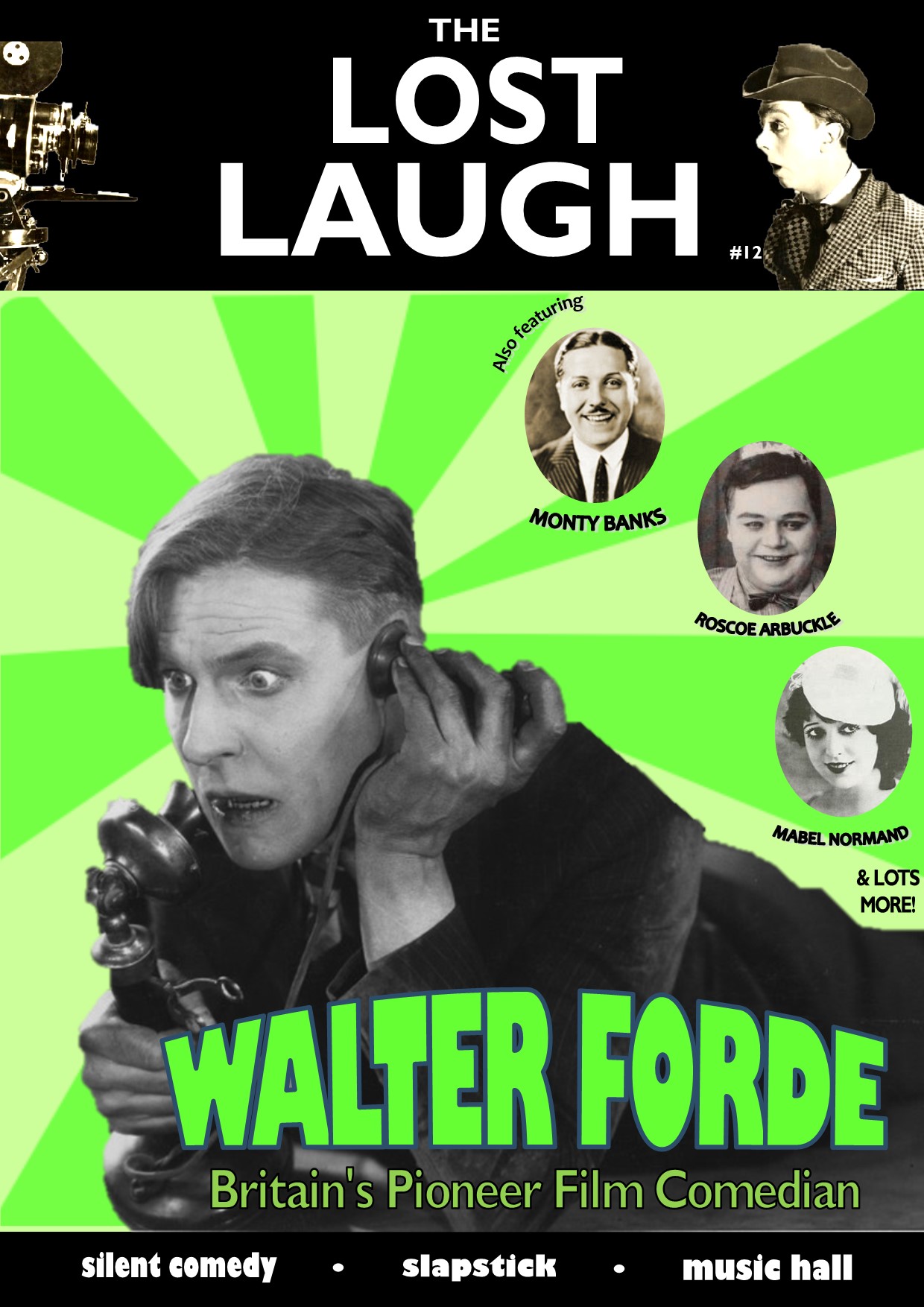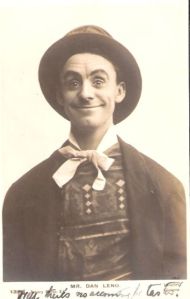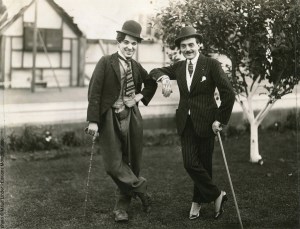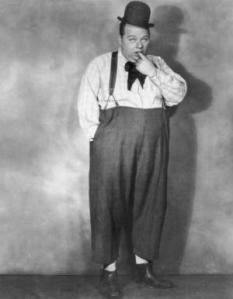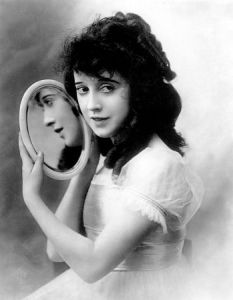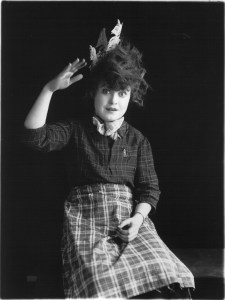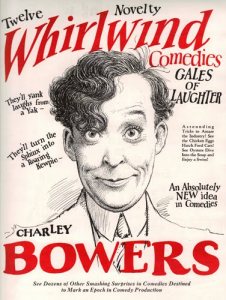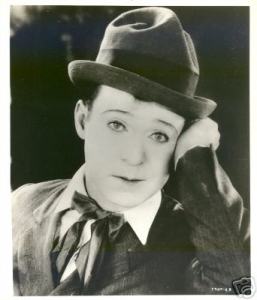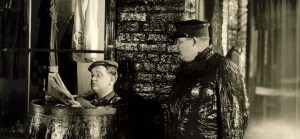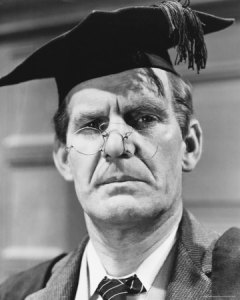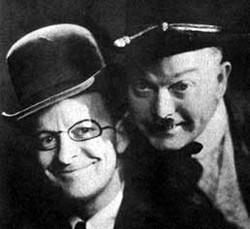I’ve just come back from the long-awaited return of Kennington Bioscope’s Silent Laughter Weekend. The world has changed a lot since the last one in 2019, and we’ve certainly all earned some good laughs! Finally, we could enjoy another full weekend of rare and classic silent comedy, and what an occasion it was. There was really something special in the air at The Cinema Museum this weekend. The films, the live music and the audience seemed even more wonderful and I think we all laughed more readily and joyously after the time away. It felt so great to be back.
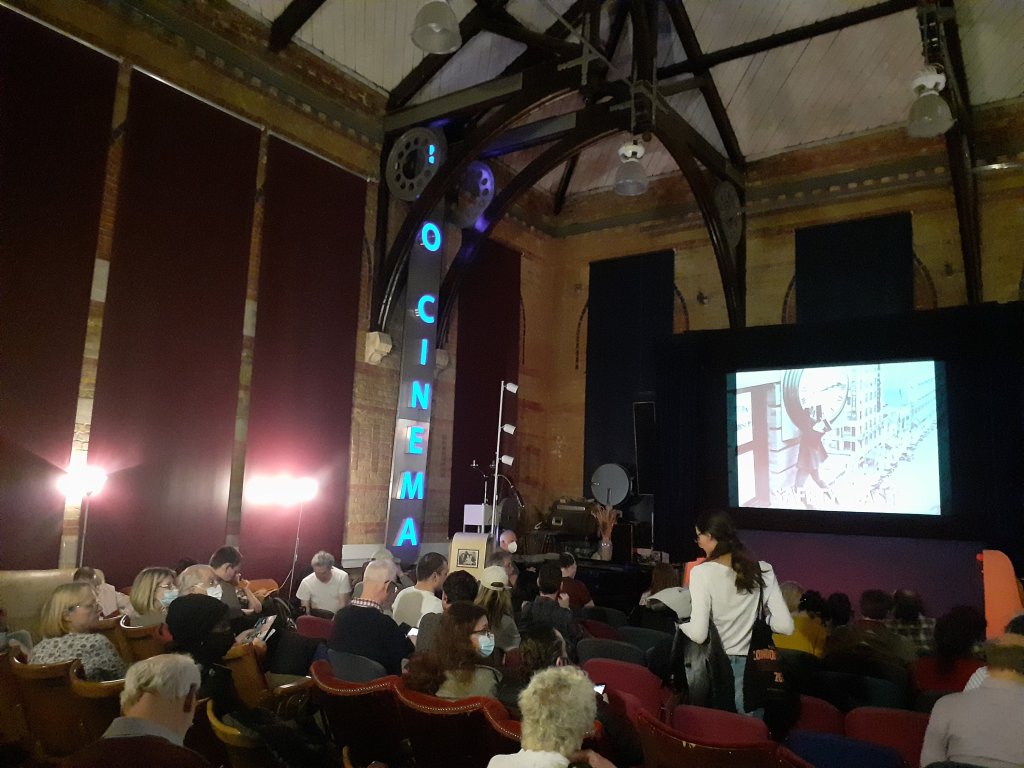
Saturday’s programme began with Walter Forde’s WOULD YOU BELIEVE IT. I’ve wanted to see this feature on a big screen for years; having only seen it, unaccompanied, on a Steinbeck in the BFI’s basement. Forde plays an inventor working on a wireless controlled tank – but spies from a hostile nation are out to steal his plans and sabotage the tank before the war Ministry gets it. This isn’t quite a classic, but a great little film with a uniquely British flavour – the highlight is a wonderful chase sequence on the London Underground (actually a specially built replica constructed at Nettlefold Studios). The opening scenes in a Toy shop feature some great gags too, including Forde’s attempts to gift wrap some helium-filled balloons. Although he began as a Chaplin imitator, and his later work is often compared to Harold Lloyd, Forde definitely has a style of his own, and the gags in this film are almost all uniquely his. He mixed thrills with his comedy too, and the climactic scenes of his tank (a genuine one borrowed from the War Office) running amok are genuinely exciting. Geoff Browne, author of the only book on Forde, gave some entertaining insights into the making of the film. There’s more on Forde here, and in issues 12 & 13 of The Lost Laugh magazine!
Next up, silent comedy expert Steve Massa, beamed in virtually from the U.S. to celebrate Roscoe Arbuckle. Steve’s presentation, accompanied by a wonderful montage of clips compiled by Dave Glass, really showed Roscoe in a new light. Like his terrific book on Arbuckle, it allowed us to focus on his comic skills and achievements, rather than that scandal. Roscoe’s ability to flit between slapstick chaos on a grand scale to subtle farce and even serious acting in films like THE ROUND UP deserves more praise, and the compilation of all these skills together in Steve’s presentation really showed what a multi-faceted talent he was. The show concluded with a complete screening of HIS WIFE’S MISTAKE (1916), a lesser-known but terrific little short, with some great slapstick routines for Roscoe.
Into the afternoon, and we had a programme of ALMOST LOST LAUGHS – films that nearly didn’t survive, but were rescued and/or rediscovered in the nick of time. These included Charley Bowers in MANY A SLIP, the surviving reel of the Charley Chase-Stan Laurel- Oliver Hardy curio NOW I’LL TELL ONE, and Edward Everett Horton’s DAD’S CHOICE. All great fun, and a good sampler of the stylistic breadth of silent comedy: surrealist stop motion, to situational slapstick to farce comedy in three easy moves.
I’d never seen Mary Pickford’s last silent, MY BEST GIRL, before. This was a real treat! The storyline of a shopgirl in a big store has some similarities to Clara Bow’s IT, but for my money this was a much funnier film. Pickford handled situational humour and slapstick with equal flair, a highlight being her attempts to walk through a busy store while carrying an enormous pile of pots and pans. The film depicts the burgeoning real life romance between Pickford and co-star Charles ‘Buddy’ Rogers. There’s an absolutely charming sequence as Mary hitches a ride on the back of a truck, “accidentally” dropping astring of objects so that Rogers will keep following her and returning them.
There’s also one hell of a comedy cast in this film, adding to the fun; stand up and take a bow Lucien Littlefield, Sunshine Hart, Mack Swain, William Courtwright, Sidney Bracey and Carmelita Geraghty.
Cinematographer Charles Rosher made MY BEST GIRL positively glow, and was nominated for an Oscar, only to lose out to… himself. He received his award not for this film, but for his work on the classic SUNRISE, nominated in the same category. Thanks to Chris Bird for sharing his rare print of this sparkling rom-com.
I’m a huge Harry Langdon fan, so it was a real pleasure to be able to introduce a showing of THE STRONG MAN, his funniest feature film. I know Harry can be an acquired taste, but I was delighted to see the film go down really well with the audience. A huge boost to the film was Meg Morley’s piano score. With his slow performance style and quirky rhythms, Langdon is quite hard to match music to – I’ve certainly heard soundtracks that don’t really suit his style before – but Meg played an absolutely wonderful accompaniment to THE STRONG MAN that was just spot on. It was one of the best live accompaniments to a silent film I’ve seen, in fact. While we’re on the subject of music, all weekend long I found myself appreciating the live music for these films even more than usual – the absence of live cinema events in the last couple of years has really driven home how much the talented silent film pianists bring to the films. Lest we forget, this is how silent films were designed to be seen.
Day 1 finished with another classic, Harold Lloyd’s SAFETY LAST. Chris Bird gave a terrific introduction explaining how Lloyd shot the climbing sequences, and Dave Glass had an extra treat: a compilation of clips from a Spanish print he’s just acquired featuring alternate camera angles, and in some instances, completely different takes! SAFETY LAST is a film made for an audience, and boy, did it deliver the goods tonight. About half the audience had never seen the film before, and were completely wowed by it, giving it one of the best receptions ever! A jubilant finish to a great day.
Day 2 began with another Chris Bird rarity – his recently rediscovered, sole surviving print of Johnny Hines’ THE WRIGHT IDEA. This was certainly the rarest film of the entire weekend, and the screening was probably the first time it had been seen in at least ninety years. I wrote about the film in issue 13 of The Lost Laugh, but briefly, it’s a typically breezy effort from Johnny Hines featuing his attempts to market his invention of a luminous, blotterless ink. A patently contrived plot sees him mixed up with an escaped lunatic, some stolen bonds, a yacht and some bootleggers; it’s all fairly ridiculous, but a heap of fun, with plenty of good sight gags. Fred Kelsey provides a good share of the comedy as the inept Detective Flatt, and the most unconvincing prop octopus I’ve ever seen is also responsible for a good few laughs, too (If that sentence doesn’t make you want to see it, what will??). Some great accompaniment from John Sweeney kept the film bouncing along pleasantly.
Lots of fun was provided by Dave Glass’s new Billy Bevan restorations from the upcoming Blu-Ray set. ON PATROL, NIP & TUCK, CALLING HUBBY’S BLUFF and WANDERING WAISTLINES really showed that Bevan was much less two-dimensional than the received version of film history tells us. As well as an excellent performer of slapstick and sight gags, he could also add plenty of subtlety, as in the famous scene where he plays cards with Harry Gribbon (and Cameo the Wonder Dog!) in NIP & TUCK, or the gentle domestic comedy of CALLING HUBBY’S BLUFF. After seeing him in these different roles, I could fully understand how he was able to transition to work as a character actor in sound films. We were also treated to an interview snippet with Bevan’s grandson, and a behind-the-scenes featurette of how Dave has completed the restorations. If you were in on the Billy Bevan Kickstarter, you’re in for a treat!

Reginald Denny followed, in the wonderful WHAT HAPPENED TO JONES? I had to duck out of this one though, as I had to go meet our special guest for the afternoon: Sara Lupino Lane, granddaughter of Lupino Lane! Sara had very kindly agreed to come along the Cinema Museum and take part in a Q & A session to accompany some of her Grandfather’s films.
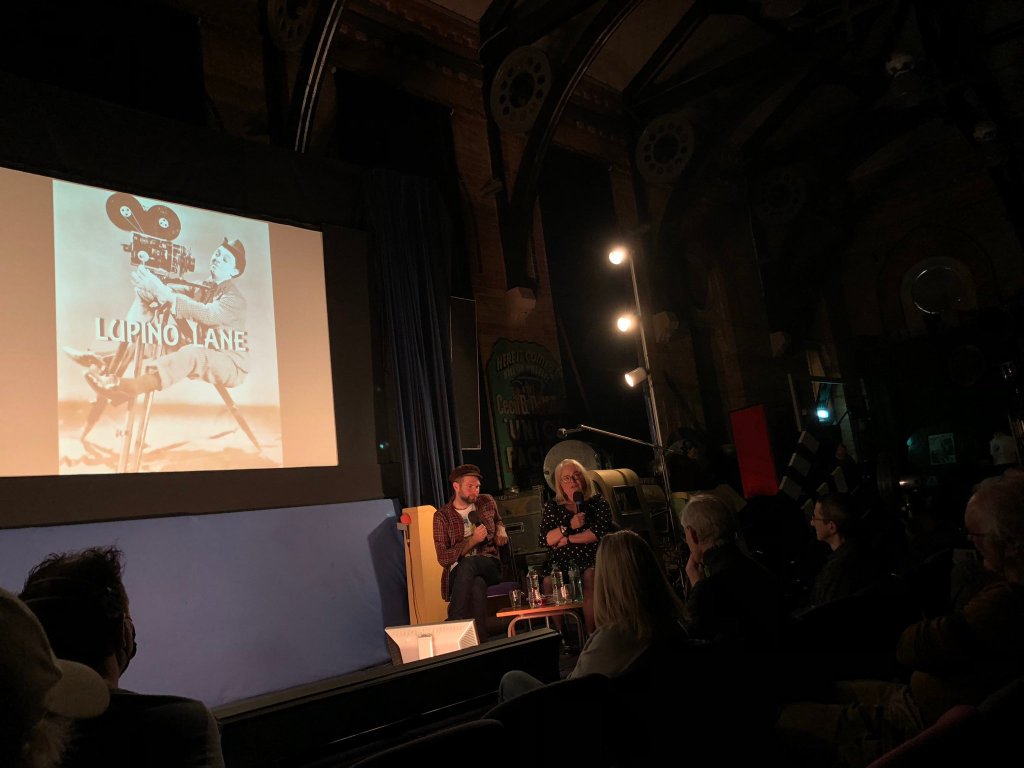
Sara has wonderful memories – of her Grandfather’s many and varied hobbies, of their trips to see panto together, and of her own father, Lauri Lupino Lane. Lauri followed in his dad’s footsteps and became a performer, specialising in a slapstick ‘slosh routine’, which he even performed in Chaplin’s A KING IN NEW YORK. Sara shared a terrific story of the time Lauri and Chaplin were together at a theatre; Lauri was besieged by autograph hunters, who all failed to recognise Chaplin and totally ignored him!
Sara was also kind enough to share one of her treasures – a can of film that she’d forgotten about for years, but had turned out to contain Lupino Lane’s own home movies! We’d kept this discovery under wraps until this weekend, but what a find they are! As well as lots of domestic scenes and clowning around, there is some priceless behind-the-scenes footage taken on the Educational Pictures lot. We get brilliant fly-on-the wall glimpses of Lane shooting MONTY OF THE MOUNTED and HALF PINT HERO; there are candid shots, outtakes and footage of Lane conferring with director Charles Lamont. There are glimpses of other comedians too: Lane’s cousins Stanley and Barry Lupino, and best of all, a previously unseen snippet of Charley Chase! Just wonderful to see, and there were some audible gasps in the room at some of the footage. As well as these rarities, we showed two of Lane’s finest slapstick ballets: SUMMER SAPS and JOY LAND, both recently restored for 2020’s Kickstarter project.
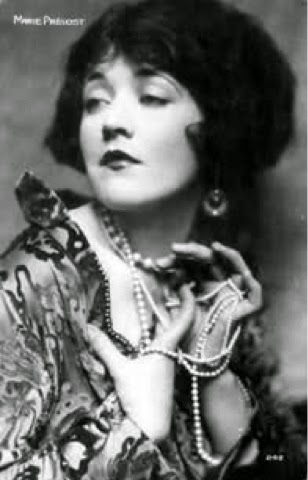
It was such a pleasure to be involved in hosting this screening. I’m always passionate about making sure that forgotten comedians are celebrated and introduced to new audiences, but being able to show Sara how much people still enjoy her Grandfather’s films felt extra special.
A change of pace for the next show – there’s no slapstick or acrobatics in view in Lubitsch’s THE MARRIAGE CIRCLE! This low-key film is much more subtle, but wonderfully sophisticated with fantastic direction from Lubitsch and brilliant performances. Adolphe Menjou and Marie Prevost, in particular, are just sublime. Costas Fotopoulos provided a lovely accompaniment to the film, and Michelle Facey gave a fact-packed introduction.
How time flies when you’re watching funny old films: it was time for the last show of the weekend already. Another treat to finish with: the always wonderful Neil Brand presenting his Laurel & Hardy show. Aside from the always wonderful clips of the boys, Neil’s intro was beautiful, describing how Laurel & Hardy had helped him through the COVID lockdown and how they were more relevant than ever. It was heartfelt and really quite emotional, and seemed to sum up the whole weekend.
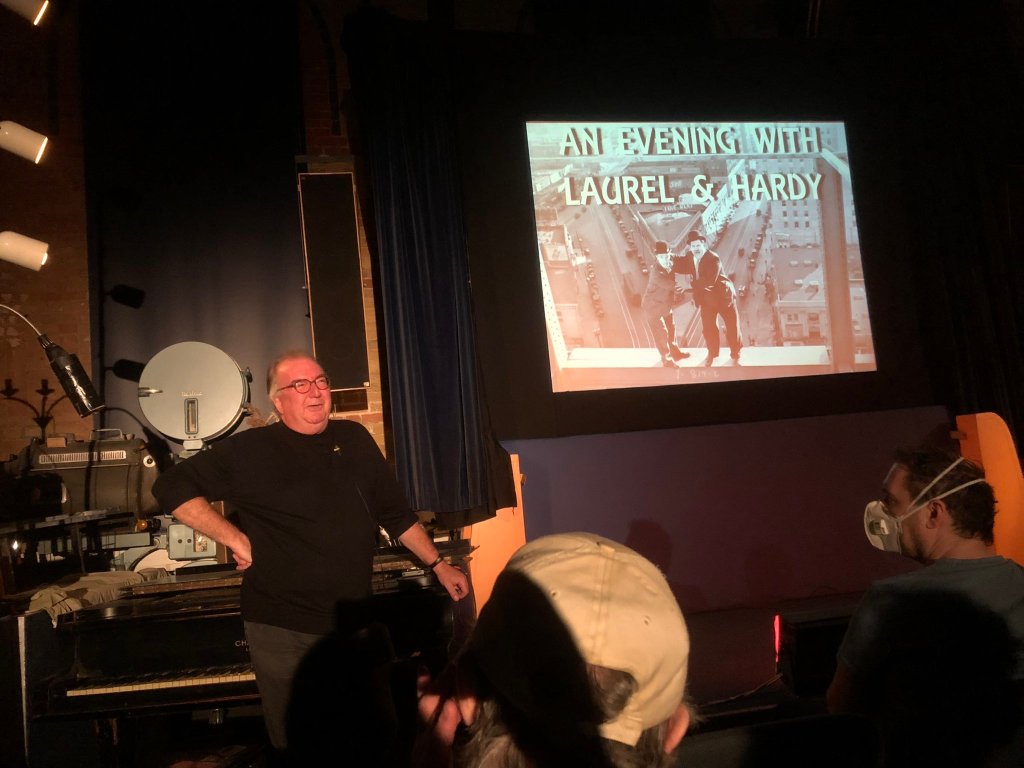
Yes, there was definitely something special in the air at The Cinema Museum – the laughter seemed to flow more freely, somehow. Part of this was down to the wonderful curation of the programme by David Wyatt and the Kennington Bioscope team, but there was something else indefinable too. The enforced hiatus seemed to make everyone appreciate everything more. How wonderful to have chance to enjoy the breadth of comic talent on-screen, but also the amazing talent of the accompanying musicians; the chance to experience the extra dimension a live audience brings to these films; the chance to meet up again with fellow comedy fans we haven’t seen in years, and share favourite moments from the films. The wonderful news that the Cinema Museum has just been given a reprieve from closing down was the icing on the custard pie.
Despite everything, these century-old films are still funny, and have the power to bring people together to share in some collective joy. That’s a special kind of magic.
Now, can we do it all again next weekend??
P. S. Here are the programme notes, for anyone who couldn’t make it:
